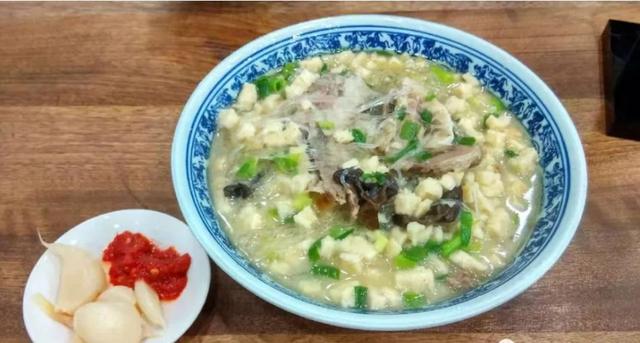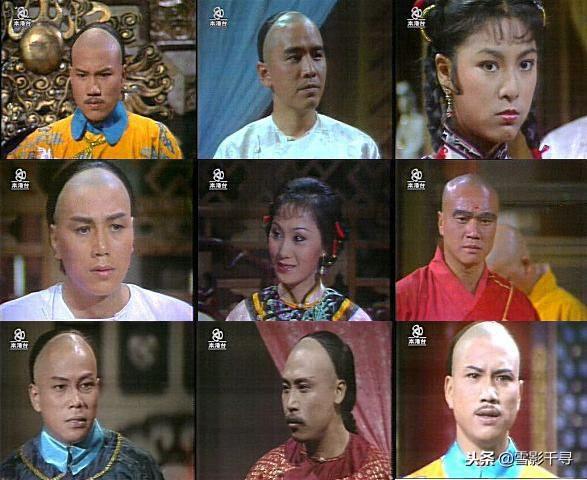Turkic Identity in Mongol and Post-MongolCentral Asia and the Qipchaq Steppe
蒙古帝国时期及其解体后中亚和钦察草原的“突厥”概念/认同
作者:Joo-Yup Lee
译者:Sansar

英文原文发表于2019年12月,取自《牛津研究百科全书-亚洲历史部分》,网址为oxfordre.com/asianhistory,版权归牛津大学出版社所有
DOI: 10.1093/acrefore/9780190277727.013.443
译者的话
如果您对概念史,知识史,建构主义,欧亚草原史,蒙古帝国史,内亚史,突厥学,蒙古学感兴趣的话,这篇或许是您的必读文章。这篇文章的亮点不在于华丽而空洞的辞藻,也不在于故弄玄虚难以捉摸的专业术语,它就是用通俗易懂的语言告诉您:史料里写了什么,怎么写的,互相之间的关系是什么,通过分析综合海量史料,展现出一幅概念/认同演变的图景。
它告诉您:
1)“突厥”一词到底指的是什么;
2)成吉思汗的“世界帝国”政权体系之所以很关键,不仅在于这一体系众多的遗产继承者,更在于这一体系塑造了生命力极强的概念/认同;
3)历史研究妥帖的分析单位是政权,而不是近现代才建构出来的“语族”,“民族”等概念。证据要建立在分析推断当时的认知结构上,而不是把后世形成的概念/单位套用到对于前世的研究上,更不是把后世形成的概念等同于前世的概念。后世“语族”,“民族”等的建构/识别,是前世政权体系社会历史进程的副产品,而不是其原因。希望这篇文章能够帮助您,以“突厥”概念/认同的演变为主线,迅速地建立起一个对成吉思汗“世界帝国”体系的全景式的理解。

Keywords
关键词
Türk, Turk, Turkic, Mongol, Jochi, Chaghatay, Uzbek, Qazaq, Tatar, Nomad, Tajik, Chinggisid, Timurid, CentralAsia, Inner Asia
(阿史那系)突厥汗国,(伊斯兰世界认知)突厥,突厥语族,蒙古帝国/(公元13世纪的)蒙古草原各部,术赤兀鲁思,察合台兀鲁思,乌兹别克/月即别,哈萨克,鞑靼,游牧人群,(定居人群)塔吉克,成吉思汗后裔/黄金家族,帖木儿家族,中亚,内亚
Summary
摘要
The Turkic identity that first emergedwith the rise of the Türk empire in the mid-6th century did not encompass allTurkic-speaking nomads in the Inner Asian world. The Türks, who founded thefirst Turkic nomadic empire, reserved the term Türk for themselves. In turn,the Uighurs and the (Yenisei) Qirghiz, who succeeded the Türks in the Mongoliansteppes, did not identify themselves as Türk. As a result, after the finalcollapse of the Türk empire in the mid-8th century, Turkic identity did notsurvive among non-Türk groups in the Mongolian steppes.
“突厥”这一概念/认同的最早出现,是伴随着公元6世纪中叶/隋唐时期(阿史那系)突厥汗国的兴起,但这一时期的“突厥”一词并不是内亚所有使用突厥语族语言的游牧人群的统称。对于建立(阿史那系)突厥汗国的(古)突厥(部落联盟)来说,“突厥”一词只指代他们自己(而并不包括当时其他使用突厥语族语言的人群)。突厥汗国覆灭以后称雄蒙古草原的回鹘(部落联盟)和(叶尼塞河流域的)黠戛斯(部落联盟)也并没有认同自己是“突厥”。以至于公元8世纪中叶突厥汗国灭亡以后,蒙古草原上就再也没有部落联盟认同自己是“突厥”了。
Turk became a much broader identity in the Islamic world. Muslim writers spread the term Turk(plural Atrāk), virtually using it as a synonym for Inner Asiannomads including both Turkic- and non–Turkic-speaking groups. Accordingly, whenthe Mongols entered the Islamic world, Muslim writers in general identifiedthem as Turks. The Muslim view of the Turks as Inner Asian nomads was adoptedby the Mongols of the Ilkhanate and the Mongol successors in Central Asia(Timurids, Moghuls, and Shibanid Uzbeks), who viewed themselves as the mostprominent branch of the Turks. (The designation Central Asia is used here forthe interior region stretching from the Caspian Sea in the west to Xinjiang, Chinain the east. Inner Asia denotes the steppe regions.)
“突厥”开始成为一个统称和广泛使用的概念/认同,是在伊斯兰世界史地观的影响之下发生的。穆斯林史学家们传播了“突厥”这个概念(复数形式:Atrāk),实际上把“突厥”一词用作“内亚游牧人群”的同义词,这些“内亚游牧人群”既包括使用突厥语族语言的部落联盟,又包括不使用突厥语族语言的部落联盟。与此相一致的是,当蒙古帝国开始征服伊斯兰世界时,穆斯林史学家也把蒙古草原各部称作“突厥”。穆斯林史学家们用“突厥”来泛指“内亚游牧人群”的世界观,后来又被伊儿汗国(译者注:蒙古帝国在西亚的后继政权)和蒙古帝国在中亚的一系列后继政权(帖木儿帝国,蒙兀儿斯坦,昔班系乌兹别克汗国等)所采用,这些政权认为自己是“突厥/内亚游牧人群”里最显赫的一支。(此处,“中亚”指代西起里海东至中国新疆的内陆地带,“内亚”指代北面的草原地带。)
Essentially, their Turkic identity was anon-Tajik, Inner Asian nomadic identity, not a non-Mongol, Türk-relatedidentity. Importantly, it encompassed Mongol identity. In the histories anddocuments produced in the Ilkhanate and the Mongol successor states in Central Asia,Turk in the phrase “Turk and Tajik” and various Chinggisid and Timuridgenealogies primarily denoted the Mongols.
这些蒙古帝国后继政权的“突厥”概念/认同,实质上是一种相对于“(定居人群)塔吉克”的“内亚游牧人群”认同(即,“突厥”是“塔吉克”的反义词),而不是否定对蒙古帝国的认同,更不是与(隋唐时期的)突厥汗国有关的认同。重要的一点是,这些政权的“突厥”概念/认同是涵盖对蒙古帝国/(公元13世纪的)蒙古草原各部的认同的。在伊儿汗国和中亚地区蒙古帝国后继政权流传下来的众多史料当中,不论是在“突厥和塔吉克”这一短语/概念中,还是在各种成吉思汗后裔/黄金家族和帖木儿家族的世系当中,“突厥”一词指代的主要就是蒙古帝国/(公元13世纪的)蒙古草原各部。
However, a Central Asian type of Turkicidentity was non-existent in the Qipchaq Steppe during the Mongol andpost-Mongol period. Apparently, the term Turk had not been used as aself-appellation among such non-Türk groups of the Qipchaq Steppe as theQipchaqs. Likewise, the Mongol successors of the Qipchaq Steppe (Uzbeks,Qazaqs, and Tatars) did not self-identify as Turks. However, like their CentralAsian counterparts, they identified themselves as Mongol descendants.
然而,蒙古帝国时期及其解体后,钦察草原(术赤兀鲁思/金帐汗国)上并没有形成类似中亚蒙古帝国后继政权的那种“突厥”概念/认同。可以看到,像(蒙古帝国时期)的钦察部落联盟这样的一些与突厥汗国无直接传承关系的部落联盟,并没有使用“突厥”一词来作为自称。同理,蒙古帝国在钦察草原上的一系列后继政权人群(昔班系乌兹别克汗国,哈萨克汗国,诸鞑靼汗国)也并不认同自己是“突厥”。但是,这些政权和蒙古帝国在中亚的一系列后继政权类似的一点是,他们认同自己是蒙古帝国/(公元13世纪)蒙古草原各部的后人。

I. The Origin and Spread of TurkicIdentity
第一部分:“突厥”概念/认同的起源和传播
Turkic identity first emerged as theself-identity of the Türks, who were the founders of the Türk empire (551–745CE). After their fall, Turkic identity disappeared in the Mongolian steppessince the Uighurs and Qirghiz, who succeeded the Türks, did not identify themselveswith the latter. Nevertheless, medieval Muslim writers spread the term Turk (pluralAtrāk), using it virtually as a synonym for Inner Asian nomads, irrespective oftheir linguistic affiliation.
“突厥”这一概念/认同最初是建立(阿史那系)突厥汗国(公元551-745年)的(古)突厥部落联盟的自我认同。突厥汗国覆灭以后称雄蒙古草原的回鹘(部落联盟)和(叶尼塞河流域的)黠戛斯(部落联盟)并没有认同自己是“突厥”,于是“突厥”这一概念/认同最终就在蒙古草原上消逝了。然而,中世纪的穆斯林史学家们传播了“突厥”这一概念(复数形式:Atrāk),他们实际上把“突厥”一词用作“内亚游牧人群”的同义词/统称,不论这些游牧人群使用的是什么类别的语言。
1.1 The Rise and Disappearance of Türk Identity
1.1 对突厥汗国认同的兴起和消逝
A Turkic identity first emerged when theTürks led by Bumin (r. 551–552) founded the first Turkic nomadic empire in theMongolian steppes in the mid-6th century. Until their final collapse in themid-8th century, the Türks reserved the name Türk for themselves and didnot employ it for other Turkic-speaking groups that they subdued such as the ToquzOghuz (Tiele in Chinese histories) and the (Yenisei) Qirghiz as can be seen inthe usage of Türk in the Orkhon inscriptions. This means that the Turkicidentity of the Türks did not encompass all Turkic-speaking nomads under theirrule.
公元6世纪中叶(隋朝时期),阿史那土门(伊利可汗,公元551-552年在位)率领(古)突厥部落联盟在蒙古草原上建立起了历史上第一个主要使用突厥语族语言的游牧帝国政权,即突厥汗国,这标志着“突厥”这一概念/认同的最早出现。从突厥汗国的兴起一直到公元8世纪中叶(唐朝时期)其灭亡,“突厥”始终是(古)突厥部落联盟的自称,其指代对象并不包括其他一些被突厥汗国降伏的使用突厥语族语言的部落联盟,如九姓乌护(汉文古籍中的“铁勒”)和(叶尼塞河流域的)黠戛斯,这一点在鄂尔浑河流域碑铭中“突厥”一词的用法上得到了体现。换句话说,这一时期的“突厥”概念/认同并不是所有臣服于突厥汗国的使用突厥语族语言的游牧人群的统称。
After the collapse of the Türks, the name Türkwas not adopted as a self-appellation by the Turkic-speaking peoples whosucceeded them, the Uighurs (a Toquz Oghuz group) and the Qirghiz. In theirroyal inscriptions, the Uighurs call themselves Uighur (Uyγur) andapply Türk (Türük) only to the Türks, whom they depict as theirenemies. For instance, in the Taryat (Terkhin) inscription, the Uighur khanMoyun Čor (r. 747–759) states: “At my age of twenty eight, in the Year of theSerpent, I disturbed and destroyed the realm of the Türks (Türük eli).” Hiswords recorded in the Moyun Čor (Šine-Usu) inscription also illustrate theseparateness of the Uighurs and the Türks: “I heard that Özmiš Tegin had becomeqan (of the Türüks). In the Sheep Year (743 AD), I marched (with myarmy) . . . I seized (Özmiš Qaγan) . . . Thereafter the Türük people has ceasedto exist.” Similarly, the Qirghiz do not use Türk as theirself-designation in their inscriptions, found in the upper Yenisei region. Forinstance, the Süji inscription, or epitaph, reads as follows: “I [was]appointed in the Uygur lands of the Yaglaqar khans . . . I am a son of the Qirgiz,the Boyla Qutlug judge.”
(阿史那系的)突厥汗国灭亡以后,接替其称雄蒙古草原的两个政权,回鹘汗国(其统治家族源自九姓乌护/铁勒)和黠戛斯,尽管使用的是突厥语族语言,也没有采用“突厥”一词作为自称。回鹘汗国在其官方碑铭中自称“回鹘”,而“突厥”一词只用来指代之前被回鹘视为敌人的突厥汗国。例如,在《铁尔痕(塔里雅特)碑》中,回鹘汗国的英武可汗(药罗葛磨延啜,公元747-759年在位)这样说道:“我二十八岁那年,是个蛇年,我打散了突厥人的汗国并摧毁了他们。”英武可汗在《磨延啜(新乌苏)碑》中记载的语录同样说明了突厥部落联盟和回鹘部落联盟的区别:“我当时听说乌苏米施特勤被拥立为突厥人的汗。于是羊年(公元743年),我率领我的军队出征了……我俘虏了乌苏米施可汗……之后突厥人就停止存在了。”类似地,黠戛斯部落联盟也没有把“突厥”一词用作自称,这一点体现于叶尼塞河上游的的黠戛斯碑铭当中。例如,《苏吉碑》中这样记载道:“回鹘药罗葛家族的汗们册封了我……我是黠戛斯之子,我是裴罗骨咄禄大官人。”
Accordingly, medieval Chinese historiansalso reserved the name Türk (Tujue in Chinese) for the Türks.They did not identify such Turkic-speaking groups as the Tiele, the Uighurs,and the Qirghiz with the Türks in the official dynastic histories. Forinstance, the Jiu Tangshu [Old Tang history] records that “after theTujue became powerful, the Tiele gradually became dispersed and small.”Likewise, whereas the Shatuo, an offshoot of the Chuyue of the Western Türks,are referred to as “a separate tribe of the Western Tujue” in the XinTangshu [New Tang history], the Uighurs and the Qirghiz are never called Tujuein the Chinese histories.
与此相一致的是,古代中原的史学家们使用的“突厥”一词也只用来指代(阿史那系)突厥汗国。在中原王朝的官修史中,铁勒,回鹘,黠戛斯等使用突厥语族语言的部落联盟并不被称作“突厥”。例如,《旧唐书》中记载道:“自突厥强盛,铁勒诸郡分散,众渐寡弱。” 类似地,只有从西突厥汗国处月部中析出的沙陀部在《新唐书》中被描述为“西突厥别部”,而回鹘和黠戛斯则从来没有在任何汉文古籍里被称作“突厥”。
Türk identity may have been preservedamong the direct descendants of the Türks for centuries following the collapseof the Türk empire in the mid-8th century. For instance, the Khazars, whoprobably branched off from the Western Türks,may have claimed descent from the Ashina clan, the ruling dynasty of the Türks.However, their “Türk”identity may have disappeared by the mid-10th century. In his letter to Ḥasdai b. Shaprūṭ (d. c. 975), theJewish courtier of the Caliph of Cordoba, the 10th-century Khazar ruler Joseph claimeddescent from Khazar, the seventh son of Togarmah, son of Japheth, following thebiblical tradition, not the Türk tradition. The Qarluq (Geluolu歌邏祿)and the Türgesh (Tuqishi突騎施), who had belonged tothe Western Türk tribal confederation centered in the Kazakh steppes, may alsohave retained a Türk identity. When the Qarakhanid philologist Maḥmūdal-Kāshgharī(fl. c. 1075) uses the term Turk in a narrow sense in his DīwānLuġāt at-Turk,he reserves it for the Qarakhanids, who were made up of the Qarluq and theChigil, among others. However, it is not clear if the Qarakhanids indeedretained a “Türk”identity. Kāshgharīprobably had no memory of the Türks. Kāshgharī does not mention the Türks in his work at all, even when hedescribes the Ötükän, which was their homeland. He simply writes that it is the“nameof a place in the deserts of Tatār,near Uighur. ”As to the ancestors of the Turkic groups, Kāshgharīonly mentions “Turk,son of Japheth, son of Noah,” and Alp Er Tonga, whom he identifieswith Afrāsiyāb, the Turanian hero of the Shāh-nāma,without mentioning any historical Türk figure.
(阿史那系的)突厥汗国于公元8世纪中叶灭亡后,其西迁的直系后人中对突厥汗国的认同/记忆可能还保持了几个世纪之久。例如,很有可能是从西突厥汗国析出的曷萨(可萨/哈扎尔)部落联盟,有可能当时认同自己是突厥汗国统治家族阿史那家族的后裔。然而,他们对于突厥汗国的认同可能在公元10世纪中叶时就已经消逝了。在公元10世纪曷萨(可萨/哈扎尔)汗国统治者约瑟写给科尔多瓦(今西班牙)哈里发的犹太裔侍从哈斯代·本·夏普鲁特(-约975)的书信中,约瑟声称自己是“哈扎尔”的后裔,而“哈扎尔”则是雅弗之子陀伽玛的第七子,也就是说,曷萨汗国的统治者已经把自己的出身和犹太教经典中的神话人物联系在一起,而不再认同突厥汗国了。曾经从属于西突厥汗国(其腹地位于哈萨克草原)的歌逻禄(葛逻禄)部落联盟和突骑施部落联盟可能也保持过对突厥汗国的认同。喀喇汗王朝的语言学家麻赫穆德·喀什噶里(活跃于公元1075年)所著的《突厥语大词典》中,“突厥”一词的狭义用法只指代喀喇汗王朝的居民,这些居民主要由葛逻禄,奇吉尔等部落联盟组成。然而,并不清楚的是,喀喇汗王朝是否真的有过对突厥汗国的认同。喀什噶里很有可能自己都不知道历史上有过(阿史那系的)突厥汗国,因为他的《突厥语大词典》里根本就没有提及突厥汗国,即使书中已经提及了突厥汗国的发祥地,于都斤山(乌德犍山,今杭爱山)。喀什噶里对于都斤山的描述很简单,即“鞑靼草原上的一个地名,离高昌(西州)回鹘不远”。至于各种“突厥”人群的源流,喀什噶里只提到了两个神话人物,一个是“突厥”,诺亚的儿子雅弗的儿子,另一个是阿勒普统阿,喀什噶里认为他就是波斯文史诗《列王纪》中图兰诸部落的英雄阿夫拉西亚伯,喀什噶里根本没有提及任何(阿史那系)突厥汗国的历史人物。
By the turn of the second millennium CE, it appears that the memory of the Türks had been obliterated in the Turkicworld. The Seljuqs, an offshoot of the Oghuz, a Turkic nomadic group thatinhabited the Aral Sea and Caspian Sea steppes during the 9th and 10thcenturies CE, did not possess any memory of the Türks. The Seljuqs may haveconsidered Oghuz Khan, the legendary ancestor of the Oghuz Turkic tribes, to betheir progenitor. However, the Oghuz tradition did not preserve any real memoryof the Türks. Some Seljuq court historians, including Ibn Ḥassūl(d. 1058), viewed Afrāsiyābas the ancestor of the Seljuqs. The Ghaznavids, who began their career as themilitary slaves of the Persian Samanids, even discarded their steppe roots.Unlike the Qarakhanids and Seljuqs, they sought to legitimize themselvesfollowing the Persian imperial tradition. Their later court historians linkedthem to Yazdagird III, the last Sasanian ruler.
到了公元9世纪末10世纪初时,使用突厥语族语言的人群中对于(阿史那系)突厥汗国的记忆似乎已经彻底消逝。例如,古兹部落联盟是公元9世纪和10世纪活跃于咸海和里海沿岸草原的使用突厥语族语言的游牧人群,而塞尔柱部落联盟则是从古兹析出的,塞尔柱人当时把古兹部落联盟的神话始祖“乌古斯汗”视为自己始祖的可能性是很大的。但是,关于“乌古斯汗”的传说中并没有任何对(阿史那系)突厥汗国的记忆。一些塞尔柱帝国的宫廷史学家把《列王纪》中的神话人物阿夫拉西亚伯视为塞尔柱人的始祖,例如伊本·哈苏尔(-1058)。伽色尼(哥疾宁)王朝的统治者出身是(使用波斯语的)萨曼王朝的(使用突厥语族语言的)军事奴隶,建立政权后,他们更是彻底否定了自己的游牧人群出身。与喀喇汗王朝和塞尔柱帝国都不同的是,伽色尼王朝的统治者试图通过把自己的源流和萨珊波斯的皇族联系在一起,从而进一步合法化自己的统治。具体的做法是,伽色尼王朝后期的宫廷史学家声称其统治者的祖先为萨珊波斯的最后一位统治者伊嗣俟三世。
In sum, the various Turkic-speaking groupsin pre-Mongol Inner Asia did not share a Türk identity. They also did notcommonly share other kinds of “Turkic”identity including the Oghuz or Afrāsiyābidentity.
小结一下,在蒙古帝国兴起以前的内亚,各种使用突厥语族语言的人群并没有形成过共同的对(阿史那系)突厥汗国的认同。同时,这些人群也没有形成过任何其他共同的身份认同,无论是对“乌古斯汗”的认同还是对阿夫拉西亚伯的认同,都只局限于某些部落联盟。
,




